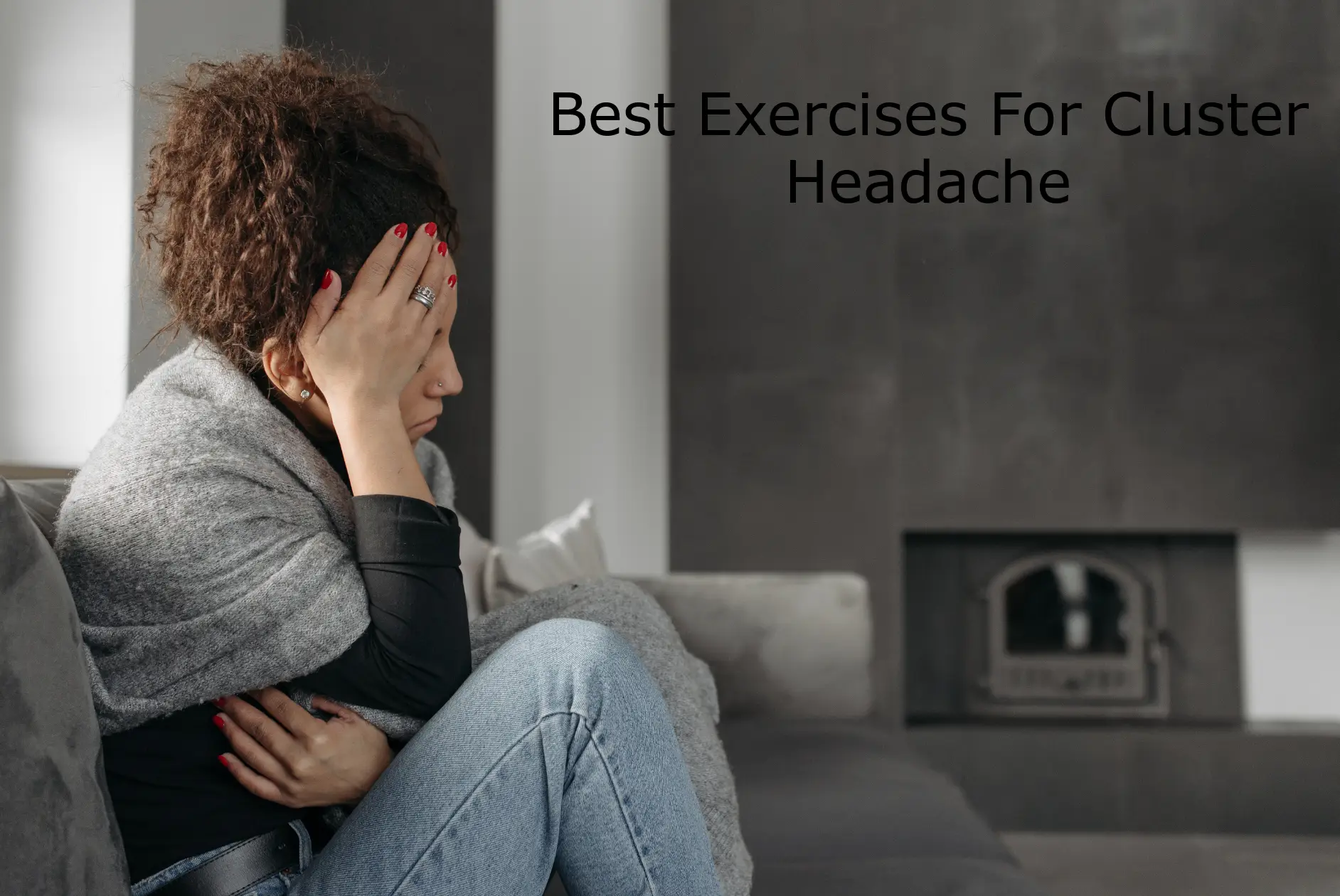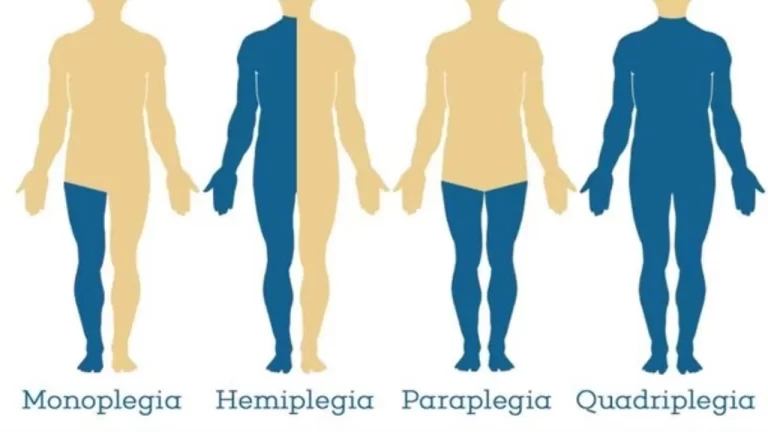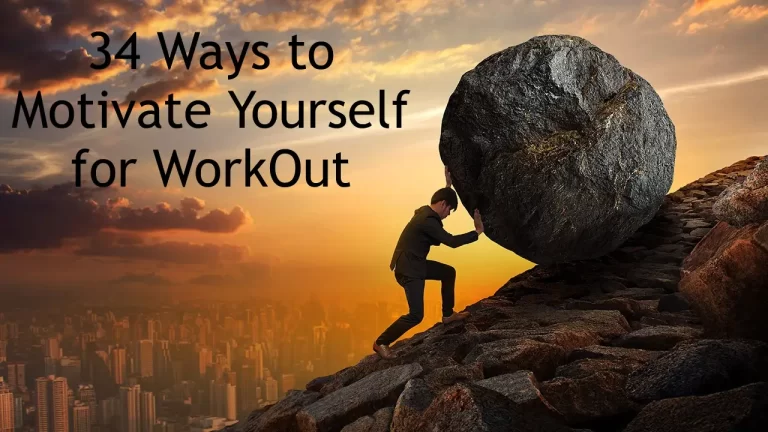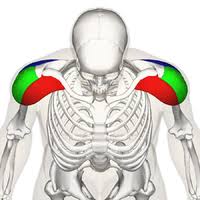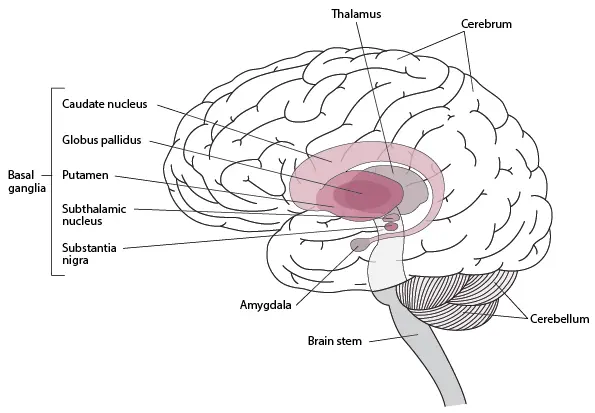Best Exercises For Cluster Headache
What Is Cluster Headache?
- The International Classification of Headache Disorders has classified cluster headache (CH), the most incapacitating kind of primary headache, as a trigeminal-autonomous headache subtype. CH is marked by the onset of intense, brief episodes of unilateral pain that are linked to autonomic symptoms.
- Usually beginning in the upper jaw, pain spreads to the orbital, supraorbital, and temporal regions. In terms of frequency, CH manifests in both chronic (CCH) and episodic forms (ECH), with an onset age of twenty to forty years old being more common in men.
- Certain research has suggested that people with CH may have symptoms and signs that point to a central sensitization process based on the clinical aspects of the condition. Research has demonstrated that even with the use of suitable medications, people with CH experience hyperalgesia, a heightened risk of depression, and a reduction in health-related quality of life. Then, a study was released that found that, when compared to healthy participants, CH patients had lower quality of life, higher levels of anxiety and depression, high levels of headache impact, and cranial and extracranial hyperalgesia.
- A number of pharmaceutical and non-pharmacological treatments have been suggested in an effort to lessen the impact that headache has on the patient’s life, given the complexity of the clinical situation and the disease’s burden.
- Pharmacological therapies that stand out for their preventive effects include verapamil, topiramate, and lithium; for their abortive effects, they include oxygen 100%, subcutaneous sumatriptan, oral corticosteroids, and occipital nerve block.
- Moreover, physical therapy and therapeutic exercise are common conservative treatments utilized in the management of patients with primary headaches. Nonetheless, research has examined the effectiveness of physical therapy for several types of primary headaches. Studies assessing the benefits of physical therapy in CH patients receiving basal medication-controlled care are nonexistent.
- The only published study on physical therapy for CH is a case report that suggests manual therapy and therapeutic exercise, along with medication and neurostimulation, may be helpful in treating the condition. Manual therapy and therapeutic exercise are two methods that have shown hypoalgesic effects for all primary headaches.
- In particular, it seems that patients with CH may benefit from targeted physiotherapeutic interventions in the upper neck area. Research demonstrating encouraging outcomes in occipital nerve stimulation was recently published.
Exercises and Stretching For Cluster Headache
- Have your notes from the starting point? Never forget to consult your physician before beginning or altering an exercise routine. Additionally, unless you are positive that a friend or relative is knowledgeable about fitness, avoid taking their counsel. Someone doesn’t automatically know how to counsel you just because they are physically strong and exercise often.
- Exercise causes your oxygen intake to increase. That’s a positive thing! The greatest benefit, though, is that exercise reduces chronic pain. Exercise at the appropriate time, in my experience, helps avoid agitated, restless moods and even certain cluster headache episodes. Nor does it require much. 30 minutes of weightlifting or fifteen minutes on the treadmill.
Lengthening the tissues allows a joint or muscle to be fully extended, which is known as stretching. The tissues that link muscle to bone are stretched as you stretch. It is collagen that makes up these connective tissues.
- Endons are structures that resemble flexible cords and link muscles to bones.
- Tough tissue bands called ligaments keep bones together.
- Layers of broad, flat tendons make up an aponeurosis.
- Muscles are separated by fibrous fibers called fasciae.
Stretching exercise
Stretching needs to be a consistent component of your regimen. You should practice it until you can perform it without thinking. You must understand your body in order to stretch properly. Have you ever been injured before? Are you preparing for a particular event, such as a race, walk, or other activity?
- Avoids harm
- Expands the range of motion
- Makes your muscles function better
- Enhances your output
While stretching, keep the following in mind
- Stretching should be a custom
- Adapt your stretches to the task at hand
- Gently stretch (feel a light tug)
- Extend fluidly; avoid jarring movements
- Hold the stretch for ten seconds, increasing to thirty seconds
- Take extra care if you are hurt
- Avoid going overboard
- Avoid bouncing
- It shouldn’t hurt to stretch
- Assist your body to avoid falling
- When a cluster cycle is active, proceed with caution
Exercises Are As Follows:
Depressions on both shoulders
- Maintain an erect spine whether sitting or standing, and keep your hands relaxed. As though you were attempting to wedge a pencil between your shoulder blades, gently squeeze them together.
- Move your shoulder blades down your back as if you’re attempting to “put them in your back pockets” after you’ve squeezed them backward. Keep your back straight, hold it for a short while, and then let go.
Temporomandibular active range of motion
- Headaches can be greatly reduced by temporomandibular joint (TMJ) release. Try to release all of the tension in your jaw and relax your face.
- Move the jaw side to side, backward, and forward slowly. Hold the stretch for a few seconds between each of the ten repetitions in either direction.
Tucks in the chin
- One of the easiest neck stretches for headaches is the chin tuck, which is a straightforward exercise with significant benefits for headache pain relief.
- To begin, assume a tall posture and visualize yourself reaching up toward the ceiling with your head’s crown.
- Apply light pressure on your chin with a couple of fingers, as though you’re attempting to create a double chin. Keep your head pointing towards the ceiling as you do this, just like in the video below.
Next Actions
- We hope that the following suggestions can help you feel less pain. Naturally, there are other headache exercises that one could attempt.
- In order to address potential contributing conditions, we advise speaking with a physician or physical therapist if you feel pain or discomfort while performing these exercises.
- Please get in touch with us if you have any inquiries or would like to schedule a consultation! We hope to hear from you soon.
How to Relieve Cluster Headache?
- A rare disease called cluster headache is typified by “cluster periods” of intense headaches that recur frequently. Approximately 80% of instances are episodic, which means that there will be a month or longer without headaches followed by a period of regular headaches, frequently happening multiple times each day. The remaining 20% are regarded as chronic because they lack these pauses.1.
- Cluster headaches have no known cure, although there are some natural remedies, over-the-counter (OTC) and prescription drugs, and even surgical techniques that can help reduce symptoms.
- This article discusses over-the-counter, prescription, and surgical methods for treating cluster headaches in addition to natural remedies.
Over-the-Counter Medicines
The majority of over-the-counter painkillers, including aspirin, acetaminophen, and ibuprofen, are rarely able to lessen the excruciating pain associated with cluster headaches. They’re rarely a match for the severity of this ailment, despite their worth and some efficacy.
Moreover, taking certain of these drugs for longer than necessary can result in medication overuse headache (MOH), a condition where headache frequency and intensity rise. MOH is more frequently observed in migraineurs, however reports of it in cluster headache sufferers are rare.
Medications
- Acute drugs (meant to treat attacks once they’ve begun) and preventative meds are the two categories of prescription drug therapies for cluster headaches.
Acute Drugs
- Here is a breakdown of acute drugs for those who are already suffering an attack:
Triptans
- When injected, the migraine drug sumatriptan (Imitrex) has been shown to be effective during cluster attacks.1. Those who are intolerant to sumatriptan or other drugs may find that zolmitriptan nasal sprays, often known as Zomig, are effective.
- There is a chance that zolmitriptan will cause side effects. It is possible for Zomig (oral, nasal, or auto-injectors) to cause adverse symptoms such as dry mouth, nausea, dizziness, and chest pressure. In addition, Zomig nasal spray may result in taste abnormalities, nasal discomfort, or heightened sensitivity to noises, lights, and scents.
Octreotide
- a synthetic form of somatostatin, a brain hormone linked to growth and intercellular communication—can have noticeable effects quickly. Six Although there are numerous signs that suggest triptans are more beneficial, this strategy has its uses.
- It is possible to get side effects with octreotide, such as gallstones (typically only after long-term use), nausea, injection site pain, abdominal pain, flatulence, constipation, exhaustion, flu-like symptoms, headache, and dizziness.
Local anaesthetic
- Drugs comparable to lidocaine, which your dentist uses as novocaine, have been used successfully to treat cluster attacks when administered intranasally (via the nose).
Dihydroergotamine
- This medication is particularly useful for treating headache attacks when administered intravenously. For more serious diseases, this therapy is usually limited to the clinic or hospital.
- Notably, people who are expecting or nursing, have a history of heart disease or other cardiac problems, high blood pressure, liver or renal disease, or are hypersensitive to this kind of medication should not receive this injection.
Medications for Prevention
Furthermore, a variety of medications are administered to stop attacks before they even occur, such as:
Calcium channel blockers
- Verapamil, also marketed under the names Verelan and Calan, is one of the best medications for preventing cluster headache attacks and is occasionally used for persistent instances.
- However, some people do experience side effects, such as decreased blood pressure, nausea, constipation, exhaustion, and ankle swelling.
Corticosteroids
- It is well known that this type of medication works very well to reduce inflammation. When long periods of remission occur, the medication prednisone (Prednisone Intensol, Rayos) can be particularly helpful as a fast-acting therapy.
- Because corticosteroids can induce adverse effects such as diabetes, high blood pressure, and cataracts, their use for cluster headaches should usually be limited to a few days.
Calcitonin gene-related peptide (cGRP) inhibitors
- Emgality (galcanezumab) blocks calcitonin gene-related peptide, a vasodilator. This drug is administered as an injection once a month.
- According to a short study, 71% of those who use this medicine will have a 50% decrease in the frequency of cluster headache attacks. When administered at the start of a cluster period, it works best.
Lithium carbonate
- When other treatments and drugs have failed, lithium carbonate, also known as Lithobid, may be recommended. Lithium carbonate is a prescription that is frequently administered for bipolar disorder.
- Patients who use drugs will need to have regular blood tests because long-term use might cause kidney damage. Be on the lookout for tremors, diarrhea, and increased thirst as additional adverse effects.
Topamax (topiramate)
- When first-line treatments prove ineffective, this medicine may occasionally be administered as a prophylactic measure.
- It is typically administered at the lowest effective dose possible due to the possibility of serious side effects.
Procedures & Specialty-Driven Treatments
There are several treatment options available to healthcare providers for cluster headaches. Surgery and other more invasive methods are saved for recalcitrant and challenging situations; other treatments can be acute or preventative in nature.
Here’s a brief summary
Oxygen therapy
- The first-line hospital treatment for cluster headaches is thought to be this quick-acting acute method. An oxygen treatment mask or nasal cannula is usually used to administer oxygen for 15 minutes at a time.
- The sole disadvantage of this method, which has no adverse effects, is that it is rather inaccessible; patients would need to carry specialized oxygen tanks with them when they are outside the clinic.
Nerve block
- To treat this condition, a mixture of a corticosteroid and an anesthetic is injected in the vicinity of the occipital nerves. When the transmission from these nerve clusters, which extend from the back of the head’s upper spine into the scalp, is inhibited, headache pain can be controlled.
- Usually used for more severe chronic cluster situations, this method offers temporary relief until longer-acting medications take effect.
Sphenopalatine ganglion stimulation
- In this treatment, a series of specialized electrodes is surgically implanted on the sphenopalatine ganglion, a part of the brain related to the processing of pain.
- Patients can effectively jumble messages from this area of the brain by using a handheld device to trigger these electrodes, which give mild electric shocks. An increasing amount of research demonstrates that this is a successful strategy for challenging instances.
Vagus nerve stimulation
- This method uses electrical stimulation that is managed by a patient’s portable device, much as sphenopalatine ganglion stimulation.
- Here, the electrodes are positioned just below the skin’s surface, providing access to the vagus nerve, which originates in the brainstem and travels through the neck.
- This strategy has been found to lower the probability of cluster attacks, while more research is required.
Occipital nerve stimulation
- According to certain research, modest electric shocks administered to the occipital lobes may also be beneficial.
- Electrodes are inserted in this region through a specialized procedure, and similar to other stimulation methods, patients have the flexibility to decide when to get therapy.
- According to preliminary research findings, this strategy may be helpful when using prescription medications to treat cluster headache attacks is ineffective.
Deep brain stimulation
- Deep brain stimulation is another more cutting-edge method of stimulating the brain to alleviate pain. It works by sending electrical signals to the hypothalamus, which is one of the brain’s other sources of pain. Notably, research is still underway, although studies assessing this strategy have produced contradictory outcomes.
Alternative and Complementary Medicine
- The medical community rarely accepts herbal and non-Western treatments to treat cluster headaches as they are mainly untested. Nevertheless, a lot of patients have reported that they work really well.
- Melatonin levels of 10 milligrams are generally thought to be beneficial, particularly when taken in the evening just before bed. Furthermore, there is some data supporting the efficacy of intranasal capsaicin as an acute therapy.
How to Treat Cluster Headaches Yourself Naturally
The most popular approaches to manage cluster headaches are with medicines and other medical interventions, but there may be some things you can do at home to help reduce or avoid episodes.
A severe kind of headache is a cluster headache.
- Cluster headache sufferers may go through episodes where multiple excruciating headaches happen in a 24-hour period. They mostly happen at night.
- Weeks or months may pass between cluster headache bouts occurring every day and a period of remission. Months or even years may pass during this remission phase.
- In general, cluster headaches are very different from other kinds of headaches. They frequently need medical attention and can be extremely severe. Cluster headaches aren’t harmful, even though they can be excruciatingly unpleasant.
Home remedies for cluster headaches
- There aren’t many effective home remedies and no approved treatments at the moment.
- There are a few effective home remedies for cluster headaches, despite the lack of scientific backing for them.
- They found that there was insufficient data or that more research was needed to support the use of alternative therapies for cluster headaches.
- Below, we’ll examine some of the currently known but unconfirmed information.
Melatonin
- Your body uses the hormone melatonin to regulate the cycles of alertness and sleep.
- Cluster headache sufferers frequently have low melatonin levels.
- When used before bedtime, melatonin supplements in dosages ranging from 10 to 25 milligrams may help avoid cluster headaches.
- Those who have persistent cluster headaches, however, might find that melatonin treatment is less successful.
Capsaicin cream
- Topical capsaicin cream that is available over the counter can be used to treat cluster headaches. Apply this analgesic sparingly to the inside of your nose using a cotton swab.
Practices for deep breathing
- One of the primary therapies is oxygen therapy. Reliable Source in case of a cluster headache.
- Your body can relax and discomfort can be better managed if you have more oxygen in your blood.
- Although there hasn’t been much research on deep breathing techniques and cluster headaches, it could be beneficial to try them in addition to your prescribed medications during an attack.
- Additionally, box breathing and pursed lip breathing are useful techniques for easing stress.
Magnesium
- Low magnesium levels have been connected to specific types of headaches. Consequently, you may consider increasing your intake of foods high in magnesium or considering magnesium supplements.
- Earlier, with 22 patients suffering from cluster headaches, 41% of participants reported “meaningful relief” from magnesium sulfate.
- However, there hasn’t been any more research on magnesium and cluster headaches.
- Before taking any supplements, especially those containing magnesium, speak with your doctor.
Kudzu extract
- Kudzu extract is a botanical supplement made from the kudzu vine. Anecdotal research suggests that kudzu may help with cluster headaches.
- Although many patients reported fewer or milder symptoms, more comprehensive testing is necessary to determine the actual efficacy of kudzu extract.
Symptoms of cluster headaches
Typical signs of cluster headaches include:
- Strong headache pain that starts suddenly and frequently wakes you up in the middle of the night
- Behind your eyes or on one side of your face.
- Headaches that begin at the same time every day or year many severe headaches lasting three hours to fifteen minutes in a 24-hour period.
- Swelling of the eyes or face runny or stuffy nose on the side of the afflicted eye redness and tears on the face where the headache discomfort started.
- Drooping your eyelid or restricting your pupil on the side where you are experiencing discomfort, tingling, or numbness in your arms or fingers, or a restless, unsettled feeling.
Causes Of Cluster Headache
- Researchers are still unsure of the cause of cluster headaches. Many other hypotheses are currently being put out and researched.
- The hypothalamus is most likely involved in cluster headaches.
- Reflex circuits in the hypothalamus, a region close to the base of the brain, control pain behind the eyes and in the face.
Activation of this neural route results in the following sensations:
- Tingly
- Pulsing
- Numbness
- Severe discomfort
Additionally, This same set of nerves can cause redness and tears in the eyes.
Prevention of cluster headaches
Cluster headaches have no known cure, but you may be able to reduce how frequently they occur by making lifestyle changes.
Regular sleep routine
- Maintaining a consistent sleep pattern may benefit your circadian rhythm.
Steer clear of tobacco
- Smokers get cluster headaches more frequently than nonsmokers.
- While quitting smoking will improve your body’s nerve reflexes and sleep patterns, it may not completely eradicate cluster headaches.
- Although it could be challenging, quitting smoking is achievable. Find more about individualized smoking cessation programs by consulting a physician.
Restricting alcohol intake
- When you have a cluster headache, drinking alcohol may exacerbate your headache. Consider cutting back on the quantity of alcohol you consume to prevent this.
Exercise on a daily basis
Frequent cardiovascular activity can improve blood flow to the brain, reduce stress, and improve sleep quality.
When to visit a physician
- The pain alone should be enough to get you medical attention if you suffer cluster headaches.
- Discuss your symptoms and any available treatments with your physician. They are able to recommend a suitable plan of action for you.
- Furthermore, speak with your doctor if you’re considering taking herbs or vitamins.
- They are able to inform you of any negative effects or interactions with prescription drugs or other therapies.
The following medical interventions are frequently recommended for cluster headaches:
- Oxygen administered via a mask
- sumatriptan injection(Imitrex)
- Subcutaneous lidocaine injection
- Steroids
- Occipital nerve block
Conclusion
Extremely intense cluster headaches frequently recur. The majority of the time, the symptoms of these headaches go away in a few days.
There are things you can do at home in addition to the therapies provided by your doctor, even though drugs and other medical interventions are the most common ways to treat and prevent cluster headaches.
Always consult your physician before attempting any home treatments.
FAQs
Can a cluster headache be lessened by exercise?
Frequent physical activity: Exercise has many advantages that cannot be overstated, and many people have found that it helps treat cluster headaches, either directly or indirectly. 3. Regular exercise, even modest exercise, has been demonstrated to enhance blood flow to the brain, lessen stress, and enhance sleep cycles.
What’s the quickest method for treating a cluster headache?
You may be administered high-dose oxygen therapy using a face mask for 15 to 20 minutes in order to halt or at least moderate an attack that is already underway. A nasal spray called sumatriptan may also be recommended by your doctor to relieve the unbearable discomfort of a cluster headache. A selective agonist of serotonin receptors is sumatriptan.
At home, what relieves cluster headaches?
Home treatments for headache clusters
Melatonin. Your body uses the hormone melatonin to regulate the cycles of wakefulness and sleep.
cream containing capsaicin. One option for treating cluster headaches is to use over-the-counter topical capsaicin cream.
Practice deep breathing.
Kalium…. radish powder.
Is yoga a treatment for cluster headaches?
Because oxygen has been shown to assist in reducing cluster headaches, yoga breathing techniques, or pranayama, can hasten the pain’s discharge. In a comfortable posture, either sit or lie down, and take four deep breaths, focusing on filling your abdomen with air.
References
Watson, K. (2023, November 28). How to Treat Cluster Headaches Yourself Naturally. Healthline. https://www.healthline.com/health/cluster-headache-natural-treatment
Mahoney, C. (2019, June 1). Exercise and Cluster Headache – Stretching. The Cluster Headache Support Group. https://clusterheadachewarriors.org/guide-category/coping/exercise-cluster-headache-stretching/

